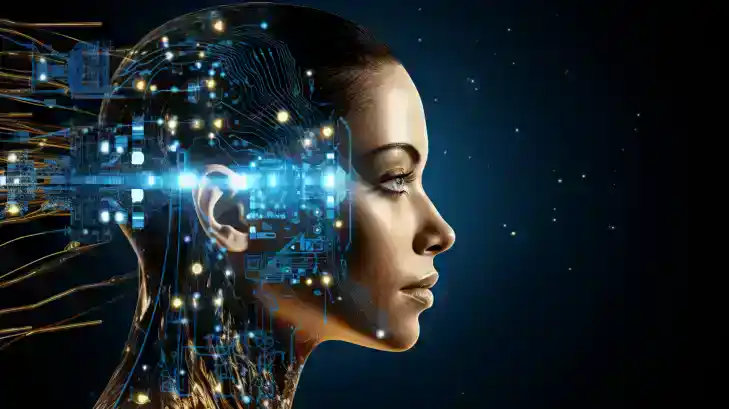Table of Contents
The DeepMind research team, dedicated to exploring the forefront of artificial intelligence known as Artificial General Intelligence (AGI), recognized the necessity of addressing a fundamental question. They pondered, what precisely constitutes AGI?
In general, it is commonly perceived as a form of artificial general intelligence that exhibits the capacity to comprehend, acquire knowledge, and utilize it in various tasks, functioning akin to the human brain. Wikipedia expands the definition by proposing AGI as a theoretical kind of intelligent agent that has the potential to master any cognitive task achievable by humans or animals.
According to OpenAI’s charter, Artificial General Intelligence is defined as a collection of “highly autonomous systems that surpass human capabilities in the majority of economically significant tasks.”
Gary Marcus, the founder of Geometric Intelligence and an expert in AI, has characterized it as an intelligence that is versatile and universal, possessing resourcefulness and dependability that are on par with or even surpass, human intelligence.
Artificial General Intelligence(AGI) Framework Structuring Progress

The DeepMind team, acknowledging the multitude of interpretations, adopted a straightforward concept expressed long ago by Voltaire: “To engage in a meaningful conversation, clarify your definitions.”
The researchers have delineated in a publication on the preprint server arXiv, a comprehensive structure for categorizing the abilities and conduct of Artificial General Intelligence models.
They aim to create a shared language among researchers to gauge advancements, evaluate different methodologies, and analyze potential hazards.
Shane Legg, the individual who coined the term AGI two decades ago, stated that attaining a level of ‘intelligence’ comparable to that of humans is a prominent objective for numerous individuals in our field.
During an interview with MIT Review, Legg expressed his concern about the varying interpretations of the term, stating that it often results in confusion. As Artificial General Intelligence gains significance as a topic, he emphasized the necessity to clarify its meaning.
The team provided a summary of key principles for an Artificial General Intelligence model in their arXiv paper titled “Levels of AGI: Operationalizing Progress on the Path to Artificial General Intelligence.” These principles emphasize the importance of focusing on the capabilities of the system rather than the process itself.
AGI Criteria: Intelligence Levels & Thresholds
The team emphasized that the attainment of Artificial General Intelligence does not indicate the presence of thinking or understanding, nor does it possess attributes like consciousness or sentience. In addition, an AGI system must possess the capability to acquire new tasks and recognize when it should seek clarification or aid from humans for a particular task.
Another factor to consider is the emphasis on potential rather than the actual implementation of a program. The researchers explained that requiring deployment as a prerequisite for measuring AGI introduces non-technical obstacles such as legal and social considerations, as well as potential ethical and safety concerns.
The intelligence thresholds were categorized by the team into different levels, ranging from “Level 0, No AGI,” to “Level 5, Superhuman.” The levels of achievement for levels 1-4 were “Emerging,” “Competent,” “Expert,” and “Virtuosos.” Out of all the AI programs, only three generative text models (ChatGPT, Bard, and Llama 2) met the AGI threshold, but they only reached “Level 1, Emerging.” No other AI programs currently meet the AGI criteria.
AI Program Classification by AGI Levels
One of the listed AI programs was SHRDLU, an early natural language understanding computer developed at MIT, which was categorized as “Level 1, Emerging AI.”
Siri, Alexa, and Google Assistant are classified as “Level 2, Competent.”
Grammarly, the grammar checker, is ranked as “Level 3, Expert AI.”
Moving up the hierarchy, we have Deep Blue and AlphaGo at “Level 4, Virtuoso.”
At the pinnacle of the list, we find “Level 5, Superhuman.”
AGI Definition Evolution and Benchmarking
Occupied by DeepMind’s AlphaFold, which can predict the 3D structure of a protein based on its amino acid sequence, and StockFish, a robust open-source chess program. Nevertheless, there is no universally agreed-upon definition for AGI, and the landscape is in a constant state of flux.
Meredith Ringel Morris, the principal scientist for human and AI interaction at Google DeepMind, emphasizes the significance of reevaluating our definition of AGI as we continue to gain deeper insights into these fundamental processes.
According to the researchers, it is impractical to list all the tasks that can be accomplished by a highly adaptable intelligence. Consequently, they propose that an AGI benchmark should be dynamic and constantly evolving. This benchmark should incorporate a framework that facilitates the creation and consensus on new tasks.